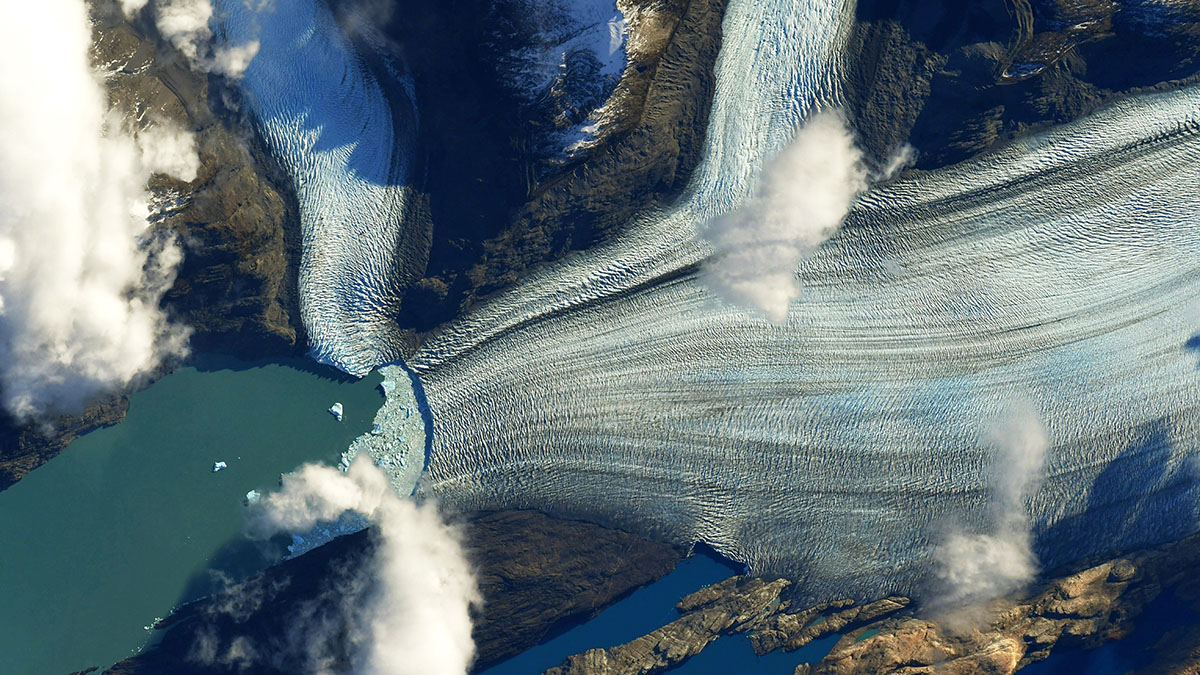HERE’S HOW TO DO IT.
Elections: how to make climate part of the conversation?
Every electoral context is specific and may require a range of coverage approaches according to different political scenarios. Here we deepen the recommendations for constructive coverage in four different electoral contexts.
By Kristian Elster, Mahima Jain, and Tais Gadea Lara
Elections are an important time to hold politicians to account. A majority of respondents in 103 out of 110 surveyed areas said climate change should be either a “very high” or “high” priority for their own governments, according to a report published in November of 2023 by the Yale Program on Climate Change Communication. Is climate change a priority in the issues to be debated during the elections? What is the role that journalism can play?
Covering an election when the basic facts of the climate crisis are under discussion, or when a major party/candidate denies the science
From Donald Trump in the United States to Javier Milei in Argentina, from Jair Bolsonaro in Brazil to Scott Morrison in Australia, political elections around the world have had–or have–candidates who have denied climate science and, consequently, delegitimized climate action. How to cover these elections?
Cover misinformation but do not misinform. In the Deal with climate denialism section of this guide we recommend to ignore speeches that deny climate science, but when a political candidate voices such opinions the situation is more complex: something must be said about it, but what?
The main advice is still not to share the message that misinforms directly but to share information. If a candidate says that “climate change is a natural phenomenon that has been happening for years”, instead of playing the video in which he says that, it is advisable to mention it briefly and then delve into the accurate information: science has proven the human impact over and over again.
Fact checking stories can also be helpful to explain and show science. Here is an example from The Guardian fact checking an Australian minister’s speech on the country’s emissions, and another one from Lupa fact checking a speech of Bolsonaro on fires in the Amazon and environmental crimes.
Cover political polarization but do not polarize. In the 2020 United States presidential elections, climate change polarized the vote, especially among new generations of voters. It would be very tempting for journalists to say who the bad guy is for the simple reason that one denies the human contribution to climate change, but–except in opinion columns–journalists should avoid attacking even the most extreme political figures.
Each communication about the candidates’ position on climate change should be accompanied by an analysis that is based on science. This is particularly important if one considers that, for example, in the United States newspapers’ coverage political actors are increasingly featured and scientific actors less so.
For example, if a candidate defends their lack of renewable energy policies “because windmills kill all the birds”, share the data that shows that cats, collisions against buildings and against vehicles are the main threats to birds, and how work is being done in the energy sector to minimize the impacts of a wind plant.
Cover climate change in connection with other topics, not alone. During the 2023 presidential elections in Argentina, one of the most repeated responses by the Milei team and followers to questions about climate change was “that cannot be a priority in a country with high poverty rates”. However, it is proven that climate change deepens existing vulnerabilities. Journalists can show how climate change –which is not usually a priority on the political and electoral agenda–is interconnected with other issues that are priorities. How will investment in sustainability bring economic returns? How to better prepare for future floods, droughts, heat waves to avoid casualties, material damage and economic losses? How can being in the Paris Agreement–and implementing it–favor trade relations with other countries? How does climate policy make the country more attractive for investors? Scientists, specialized experts, and reports can be key sources to explain these interconnections.
Elections in which the issue of climate change is not considered by most or all candidates/parties
There are elections in which climate change is neither denied nor named but simply ignored. How to cover these elections?
Ask. If climate action is not a topic of conversation, it will be the journalist’s duty to put it on the table. Ask questions about specific proposals, but also those that connect it with other topics (investments, poverty, economic development, international relations). Ask questions that link it to current events, for example frequent and intense heat waves. What actions would the party or candidate in question implement to reduce emissions and adapt better?
Investigate the past. Candidates-and their teams-are not always willing to talk to journalists, especially about climate change. But the history of political parties can provide useful analytical information. If, for example, the main congressional candidates do not mention climate action proposals or answer questions about them, journalists can analyze their party’s electoral behavior. Did they vote for or against bills that promote the transition to renewables? Did they vote for or against the creation of protected areas? Did they vote for or against the protection of ecosystems?
Elections where the issue of climate change is considered by most or all candidates/parties, but there is disagreement on the steps to be taken
These are elections where climate change is high on the agenda, or at least a significant part of the election campaign. For example, the election to the EU parlament in 2019 was widely known as “The green election”.
Reduce the noise level. During campaigns politicians usually increase their noise level. Mouthing generalities or attacking opponents are established ways of concealing the lack of climate policy of one’s own party. Facts and science based journalism is the way to avoid this.
Compare positions on overall goals. Countries agree to international/regional/binational commitments whose implementation involves local actions. Track the work done or the lack of it. See the reasons, opportunities and challenges behind that. You can follow the National Determined Contributions (NDCs) of each country at the United Nations Framework Convention on Climate Change’s registry.

Focus on concrete proposals. Look at what concrete proposals parties/candidates are suggesting or supporting: introducing (or strengthening) carbon taxes, regulating gas and diesel cars, subsidizing renewable energy? Election campaigns are the time to ask politicians whether they support specific issues or not.
Elections are a time to go beyond political speeches that announce goals to dive into how these goals will become a reality. When politicians make proposals for reducing CO2 emissions, ask them for numbers. How will emissions actually be cut according to a particular proposal? Which alternatives do they propose to reach the goal? Beware of greenwashing, where one claims to be on track without showing a credible plan.
Elections where the science of climate change is accepted and the country is extremely exposed to climate impacts
In many countries across South Asia, South-East Asia and Africa, climate change is happening now and impacting the majority of the population. Yet it is not at the top of the agenda during elections. What can media do?
Clarify adaptation and mitigation policies. In the recently concluded Indian elections, journalists and commentators were divided over whether the political parties addressed climate change at all. While some media pointed out that most parties paid lip-service, they didn’t seem serious about actions. Others noted that climate change is already an issue in the Indian elections–however, indirectly, given how it impacts the people. The situation in India is representative for almost all of the countries which face climate impacts while under pressure to grow their economies and curb carbon emissions.
Adaptation and mitigation need to happen alongside economic development for most developing countries. But the priorities may vary. For many African nations, experts we spoke to noted that the need for adaptation efforts is higher than for mitigation. For other countries, such as the Pacific Islands nations, the loss and damage needs may be bigger. Climate commitments and electoral needs can vary for different countries, and hence shape politics accordingly. This means newsrooms need to cover and understand local electoral politics with a climate lens.
Elections are the time when journalists can investigate politicians who blame climate-linked events solely on climate change to distract from poor policies, lack of infrastructure or investments in climate action. Journalists need to investigate this.
Stories will look differently in vulnerable countries. This is one area where all three pillars of the constructive climate lens can be used to discuss, debate, and inform the public.
Make it about livelihoods and business. Journalists and newsrooms can make climate change an election issue by talking about the green transition and how unchecked and unmanaged climate impacts affect daily lives and the future.Rising sea levels and loss of snow cover due to climate change will affect the livelihoods of more than 200 million people in Bangladesh, Bhutan, the Maldives, Nepal, and Sri Lanka, according to the Asian Development Bank. Economies in Asia need to grow for prosperity. But unmitigated climate change will shrink the economies of six countries–Bangladesh, Bhutan, India, the Maldives, Nepal, and Sri Lanka–by up to 1.8% every year by 2050 and 8.8% by 2100, ADB notes. These countries are heavily dependent on sectors such as agriculture, outdoor labour and fisheries, which are impacted by climate change.
Rising sea levels and loss of snow cover due to climate change will affect the livelihoods of more than 200 million people in Bangladesh, Bhutan, the Maldives, Nepal, and Sri Lanka, according to the Asian Development Bank. Economies in Asia need to grow for prosperity. But unmitigated climate change will shrink the economies of six countries–Bangladesh, Bhutan, India, the Maldives, Nepal, and Sri Lanka–by up to 1.8% every year by 2050 and 8.8% by 2100, ADB notes. These countries are heavily dependent on sectors such as agriculture, outdoor labour and fisheries, which are impacted by climate change.
Politics and policies that affect people’s incomes need to also include the climate angle, and newsrooms can connect such dots. This can include examining social protection schemes, frameworks for loss and damage funds, resources for vulnerable communities, skill development for new economies, just transitions and green sectors which may provide employment in the future.
Look at the election process. In many countries, climate change will also impact the election processes itself. Democratic processes will need to be held in the midst of floods, heatwaves or droughts, often worsened or brought on by climate change itself.
After the devastating floods in Pakistan in 2022, experts pointed out that there was little effort to understand the after-effects that disenfranchised a large population. Research showed that the floods affected the infrastructure required to hold elections. After surveys, some recommendations included reissuing lost documents to voters or setting up mobile voting booths, to repairing polling booths and other infrastructure that can enable polling in flood affected communities.
Another example is India. The world’s largest democracy, held elections in the midst of a heatwave. Over 15 million election officials were deployed for 969 million voters. As temperatures crossed 45-52 degrees, over 30 election officials died on duty, and 25,000 people suspected suffered heatstrokes and 56 others died due to heath-related causes from March to May, according to media. Reports note that there was not enough cooling infrastructure to keep people safe. The Election Commission of India has also taken the rising temperatures into account and has said it will consider not holding the next elections in the summer.
Thus, journalists will find many stories at the intersection of climate change and elections; covering the impact of climate risks on voters and voting processes are under-reported. Do election bodies have climate change-friendly policies or processes in place to tackle the onground impacts of climate change on voters and their staff? Are resources being used for political rallies in the midst of a water crisis, worsened by climate change? Can there be a climate-friendly election campaign? Journalists in vulnerable countries can be ahead of the curve and investigate potential impacts that climate change can have on election processes.
Menu



